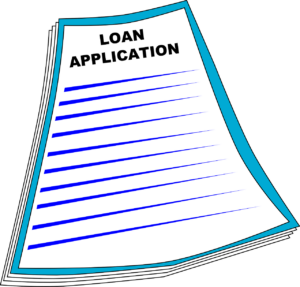Most people need to borrow money at some stage in their life, either for an emergency bill or a repair, or perhaps for a house or vehicle.
Popular borrowing options include personal loans, credit cards, home equity loans, payday loans, retirement account loans, peer-to-peer lending, and borrowing from family and friends.
Assess your financial needs and establish clear borrowing goals to make informed borrowing decisions.
Do I Need to Borrow Money?
Assess Your Financial Situation: The first step in borrowing money is to assess your financial needs and capabilities. Determine how much you need, why you need it, and your ability to repay the borrowed funds.
Establish Clear Goals: Define specific goals for the borrowed money. Whether it’s for education, home improvement, debt consolidation, or an emergency, having clear objectives will help you choose the right borrowing option.
What are the Best Ways to Borrow Money?
- Payday Loans and Installment Loans: Payday loans and installment loans can be good short-term options, often used for covering emergency expenses. They can come with high interest rates, making them a costly choice. Therefore, it is important to understand the terms and repayment requirements.Payday loans can be a solid choice to cover emergency expenses such as medical bills or veterinary bills – an estimated 19 million Americans have medical bills in collections. Dime Alley’s payday lenders offer a range of options and you could receive cash in your account in the same day you apply.
- Credit Cards: Credit cards provide a revolving line of credit that you can use for everyday expenses or emergencies. They offer convenience but often come with higher interest rates. Managing credit card debt is crucial to avoid accumulating high-interest charges.However, statistics show that as of 2021, credit card debt exceeded $800 billion, with millions of consumers carrying balances. Therefore, it is important to be careful when using a credit card to borrow money.
- Home Equity Loans and Lines of Credit: If you’re a homeowner, you can tap into your home’s equity to borrow money. Home equity loans and lines of credit (HELOCs) use your property as collateral.These loans typically have lower interest rates compared to unsecured options, but they put your home at risk if you fail to repay.
- Borrowing from Retirement Accounts: Some retirement plans, such as 401(k)s, allow for loans. While borrowing from your retirement account can be a quick source of funds, it may have tax implications and impact your long-term retirement savings.
- Peer-to-Peer Lending: Peer-to-peer lending platforms connect borrowers with individual investors willing to fund loans. These loans often have competitive interest rates and flexible terms.
- Borrow from family and friends: Borrowing from family or friends is an informal way to secure funds. However, it’s essential to approach such arrangements with caution and maintain clear repayment terms to avoid straining relationships.
- Personal Loans: Personal loans are a versatile borrowing option. They can be used for various purposes, including debt consolidation, home improvements, and major expenses. Personal loans are typically unsecured, meaning you don’t need collateral, and they offer fixed interest rates and structured repayment plans.
How Can I Borrow Money Instantly?
With Dime Alley, you can borrow money online in a quick and easy way. When you fill-out our 5-minute application form, you can get a instant on-screen decision which will notify you whether you qualify for our loan products which include payday loan products, installment loans, title loans and more.
Dime Alley offers an effective way to borrow money fast, whether you have been hit with an emergency bill or expense, or if you are in need of some extra cash to pay for an important purchase such as an engagement ring, starting a business or buying a new car.
Reports show that 57% of Americans cannot afford a $1,000 emergency expense and have no emergency fund in place, and so our small loans of $300 or $500 or as much as $35,000 can be a great way to help fund any important purchases.
How to Borrow Money in US States
To provide a regional perspective on borrowing habits, let’s look at some statistics on the most popular ways to borrow money in these three states:
California: Personal loans and credit cards are the top choices for borrowers in California, with personal loans being favored for larger expenses, such as home improvements or debt consolidation.
Florida: Floridians commonly turn to home equity loans and credit cards for their borrowing needs. Given the state’s high homeownership rate, home equity options are particularly popular.
Texas: Texans tend to prefer personal loans and payday loans for short-term financial needs. The availability of peer-to-peer lending platforms has also gained traction.
